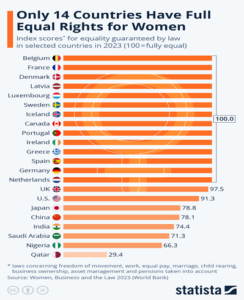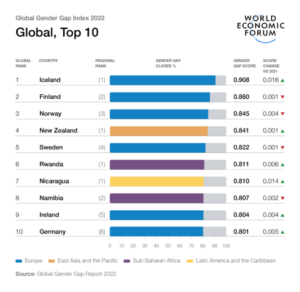“Dignity and the City”.
Relevance:
GS 1 – Urbanization, Problems and Remedies.
GS 3 – Inclusive Growth and Issues arising from it.
Tags: #indianexpressananalysis #womensafety #urbanisation #urbanplanning #voilenceagainstwomen.
Why in news:
India’s urban population is about 35 per cent, by 2050, it is projected to be around 60 per cent, this rising urban population is increasing pressure on urban cities, causing tension, and one such issue is women denied their Right to city.
Issues faced by women in Urban areas-:
- Urban planning and management often do not address women’s economic and social realities or Promote their “Right to city” lack of women toilets in urban areas
- They are constraint by fear, violence and exclusion like rising rate of violence against women, lack of safe travelling options, etc.
- Rarely feel sense of freedom and autonomy due to Unequal burden of care work they have very less time to focus on their personal development and growth and hence restrict the opportunity to learn new skills.
Facts related to Women’s Safety in Urban Cities:
- 2017 World Bank Study in Delhi showed that women were willing to travel for 27 minutes more daily to take a route that was perceived to be safer
- 2019 Ola Study revealed that only 9% of women from 11 cities felt it was safe to use public transport.
- 2017 World Bank Study in Delhi showed that women were willing to travel for 27 minutes more daily to take a route that was perceived to be safer
- Women’s employment in India is currently under 20 % compared to over 70 % for men.
The above mentioned issues and facts shows how opportunities get restricted for women and the lack of safety affects women’s sense of well-being.
Is technocratic approach the solution?
Meaning a using just technology to address the issues face by women in urban areas like-
- CCTV cameras
- Policing or emergency Apps
- Women 24X7 helpline number
- Compulsory safety button in apps like OLA, Uber for women safety
All the above technological measures can help violence against women but will it ensure their Equity and inclusion of women?
Technology cannot be only solution to deal with lack of gender sensitive urban planning; we need to translate them into urban policies, meaningful and sustainable solutions, to ensure their rights, their participation in decision making, giving them their due representation in urban planning
How to deal with the issue?
- Firstly we need to accept à that it is not just women issue, but an Urban Issue of equity and inclusion
- Many areas require change like Physical and social infrastructure, Safe spaces , women friendly transport services, response to gender violence
- Public domain needs to be made more gender friendly and inclusive of all people of diverse ages, socio-economic statuses, genders, abilities and ethnicities.
Famous Urbanist Jane Jacobs once said- “Cities have the capability of providing something for everybody, only because, and only when, they are created by everybody”
Unequal burden of Care Work – affects Women life in city:
- Central to any society and economy, remains invisible. In 2018 ILO Research points out à Indian women spend 297 minutes on housework a day, while men spend 31 hours
- 2021 Oxfam Report showed à Indian Women and Girls put in 3.26 billion hours of unpaid care work daily.
The above picture shows Gender Gap Report 2022:
- India ranked 140 out of 156 countries in the 2022 Global Gender Gap Report, published by the World Economic Forum. This is a decline from its rank of 135 in 2021.
- India’s score on the report’s four pillars of gender equality – economic participation and opportunity, educational attainment, health and survival, and political empowerment – was 68.2. This means that India has closed 68.2% of its gender gap.
- India’s lowest score was in the political empowerment pillar, with a score of 25.6. This means that women in India are significantly underrepresented in government and decision-making positions.
- India’s highest score was in the educational attainment pillar, with a score of 97.1. This means that women in India have achieved near-parity with men in terms of educational attainment.
How to deal with the issue?
- Firstly we need to accept à that it is not just women issue, but an Urban Issue of equity and inclusion
- Many areas require change like Physical and social infrastructure, Safe spaces , women friendly transport services, response to gender violence
- Public domain needs to be made more gender friendly and inclusive of all people of diverse ages, socio-economic statuses, genders, abilities and ethnicities.
- Provide affordable childcare and eldercare. This will allow women to participate in the workforce without having to worry about the care of their children or elderly relatives.
- Offer flexible work arrangements. This could include telecommuting, flextime, or compressed workweeks. This will allow women to balance their work and family responsibilities.
- Encourage women’s leadership. This could be done by providing training and mentoring programs for women, or by reserving seats for women on boards and commissions.
- Challenge gender stereotypes. This could be done through education and awareness campaigns, or by changing the way that women are portrayed in the media.
Way Forward:
- Some cities initiated the change to address these issues by providing women-only transportation and parks, as well as free buses and helplines.
- It requires a holistic approach to people’s social and economic realities.
- Inculcate views and ideas from different sections of society , following bottom to Top approach while framing Policies.
- Bringing innovative and out of the box solutions to problem of Equity and inclusion.
- Our cities must be measured by the dignity afforded to every person in the city just like multi dimensional poverty index going beyond income.
Source: Indian Express.
Mains question:
Q) Discuss the challenges and opportunities for women’s participation in urbanization in India?
Q) Explain the challenges faced by women in participating in urbanization in India. What are the government initiatives to address these challenges?





